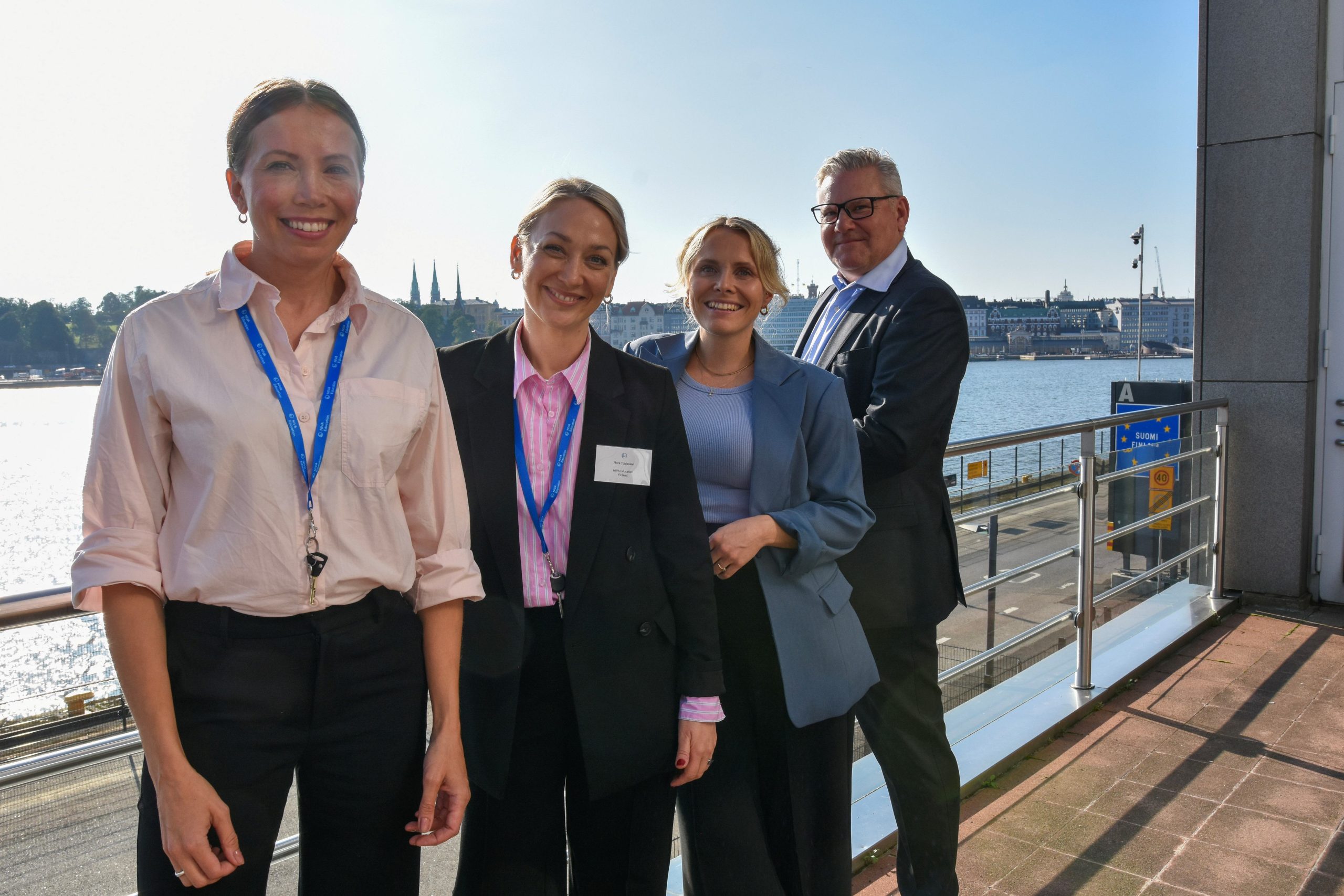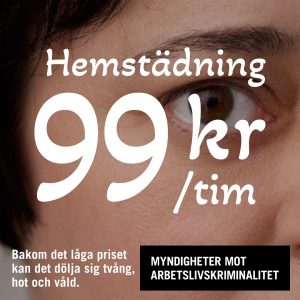We meet the NIVA team during a break in the middle of a few hectic days in Helsinki. They are facilitating two full-day conferences – one on labour market crime and one on the psychosocial work environment – on behalf of the Finnish Presidency of the Nordic Council of Ministers.
Each conference features many speakers and around 100 participants.
Read the article in Norwegian on Arbeidsliv i Norden
When you take part in a NIVA course or seminar, a lot is going on behind the scenes that you never notice. There is a great deal of work involved before, during and after an event.
“NIVA looks after the workings that are invisible to most people, but they are crucial for enabling Nordic researchers, practitioners and decision makers to meet and develop work environment issues together.”
This is how Julia Hemgård describes NIVA’s role. She is one of the institute’s project managers and its communication advisor.
Facilitating Nordic courses for more than 40 years
NIVA was founded in 1982 in Helsinki. The Nordic course provider is still based in the Finnish capital.
About NIVA
Short for “Nordiska Institutionen för Vidareutbildning inom Arbetsmiljöområdet” – The Nordic Institution for Further Training in Work Environment Issues
Founded in 1982 in Helsinki
Funded by the Nordic Council of Ministers and course fees
NIVA’s board make strategic decisions with the NIVA director. The board consists of representatives from work environment research institutes from the Nordic countries.
It is a small, but – according to those who work there – efficient organisation. They get a lot done with few resources. There are only three project managers and one director.
Each team member is a bit of a “Swiss army knife”: They have to be versatile and flexible and ready to perform all kinds of tasks.
“Our job is to make things run smoothly for lecturers and participants. It’s a varied and fun job but also sometimes pretty challenging,” says project manager Nora Tobiasson.
A meeting place for thousands of people
During NIVA’s more than 40 years of being an active player in workplace training, more than 13,000 experts and specialists from over 40 countries have taken part and built networks through NIVA’s activities.
A NIVA course is expected to include contributions from two to three Nordic countries. This ensures both academic and geographic diversity and spreads knowledge between research communities that are otherwise small and scattered.
Nowadays, the courses are often held in major cities like Copenhagen, Stockholm, Oslo, Malmø and Helsinki, due to logistics and to keep costs (including travel) down.
Most course participants are from Sweden, Norway and Denmark, while Finns are in the minority, even though the secretariat is located in Helsinki.
The courses are open to participants from around the world. Some 40 per cent come from outside the Nordic region, and courses may have participants from Europe, Australia, and Asia.
The course language is English.
The need for a Nordic arena
So, in an increasingly international world, why stick to the Nordic aspect? Why do we need a course facilitator like NIVA?
“Leading Nordic work environment researchers realised as early as the 1970s that the national research communities were too small, and they set up NIVA as a platform for joint research training.
“This was done both to make possible and strengthen cooperation between established researchers and to bring on board the younger ones,” says Henrik Bäckström, NIVA’s director.
“NIVA was transferred to the Nordic Council of Ministers in 1982 to ensure a sustainable long-term operation.
“Since then, work environment research (and other sciences besides) has become more specialised and grown a lot, which has made the need for a joint Nordic arena even bigger,” argues Bäckström.
Must take on new challenges
So, what does the director see as the largest future challenges, both for NIVA and for training and research in the field of work environments?
Challenge number one, says Bäckström, is that there are too few educational initiatives in the field.
“Both traditional and new work environment challenges are multiplying in our labour markets. There are still issues related to harmful substances, irregular working hours, ergonomics and the physical work environment.
“At the same time, more and more aspects of the psychosocial work environment are being recognised in both research and legislation.
“The expansion of the work environment field means we need more training and education, so that research delivers societal benefits to practitioners and decision-makers.”
Bäckström argues challenge number two is about communication.
“We need to communicate the results from work environment research better. Communicating research results to relevant stakeholders is a major task when the research becomes more specialised and expands, and when it also includes work environment issues that cross national borders, like labour market crime, AI, remote work and platform work.”
Went online during the pandemic
NIVA has hosted 75 events in the past four years – 47 courses, 19 webinars and 9 conferences – with nearly 5,000 participants from across the Nordics and beyond.
More than 400 course leaders from Nordic research institutions have contributed.

The pandemic changed the way NIVA works. The digitalisation during the pandemic made it possible to reach far more people. It tripled the number of participants. Today, around 60 per cent of NIVA events are online.
“The physical meeting places remain essential and are valued for networking, exchanging experiences and establishing new research contacts.
“Course participants particularly value the opportunity to build long-term cooperation,” says project managers Julia Hemgård and Nora Tobiasson.
NIVA is funded by the Nordic Council of Ministers (70 per cent) and course fees (30 per cent). The course fees are “subsidised” by the Council of Ministers and are lower than the market rate.
But the “cost-of-living crisis” has impacted the course organiser too. Hosting an event has become more expensive, while companies have less time and money to spend on courses.
A broad programme for 2026
Next year, the focus will be on preparedness and safety in working life, labour market crime, digitalisation and artificial intelligence (AI), and the psychosocial work environment.
At the same time, the classic work environment themes – such as ergonomics and chemical exposure – will remain the backbone of the course calendar.
A new course on the work environment in the seafood industry will be held in Bodø in Northern Norway.
Examples of courses in 2026 include:
- Workers in the cold
- Safety culture and safety behaviours in military operations
- Solutions for identifying migrant worker exploitation
- Occupational health in the seafood industry






